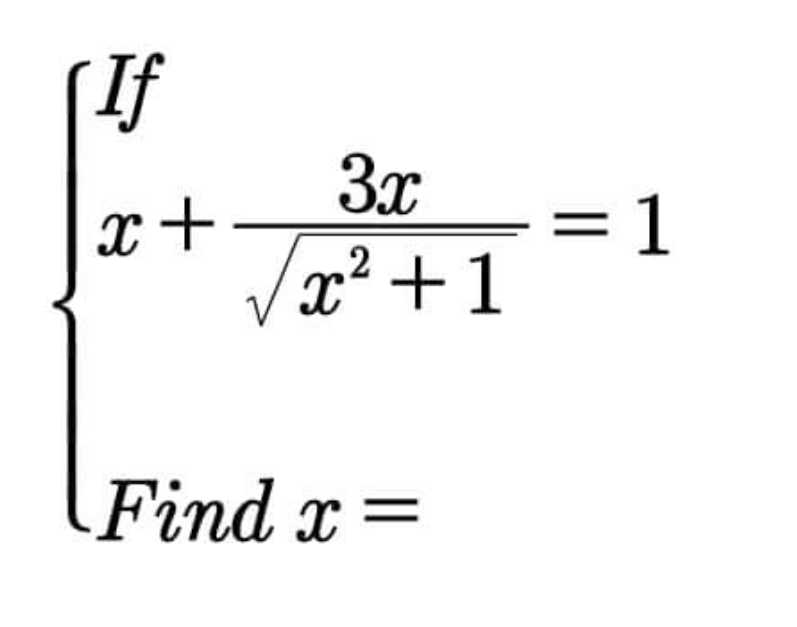
AllQuestion and Answers: Page 551
Question Number 164236 Answers: 2 Comments: 1

Question Number 164231 Answers: 0 Comments: 0
Question Number 164227 Answers: 2 Comments: 0

Question Number 164222 Answers: 0 Comments: 0

Question Number 164211 Answers: 1 Comments: 0

Question Number 164210 Answers: 1 Comments: 0

Question Number 164208 Answers: 0 Comments: 0

Question Number 164206 Answers: 2 Comments: 5

Question Number 164457 Answers: 1 Comments: 0
Question Number 164196 Answers: 1 Comments: 0
Question Number 164193 Answers: 2 Comments: 2

Question Number 164191 Answers: 1 Comments: 0

Question Number 164189 Answers: 0 Comments: 1

Question Number 164188 Answers: 0 Comments: 0

Question Number 164187 Answers: 0 Comments: 0

Question Number 164178 Answers: 2 Comments: 1

Question Number 164177 Answers: 1 Comments: 0
$${x}+\frac{\mathrm{1}}{{x}}=\mathrm{3} \\ $$$$\frac{{x}}{\:\sqrt{{x}}+\mathrm{1}}=? \\ $$
Question Number 164176 Answers: 2 Comments: 0

Question Number 164174 Answers: 1 Comments: 1

Question Number 164171 Answers: 1 Comments: 0
Question Number 164163 Answers: 2 Comments: 0
Question Number 164162 Answers: 0 Comments: 5
Question Number 164157 Answers: 0 Comments: 0
Question Number 164156 Answers: 0 Comments: 0
Question Number 164155 Answers: 1 Comments: 2
Question Number 164154 Answers: 1 Comments: 0
Pg 546 Pg 547 Pg 548 Pg 549 Pg 550 Pg 551 Pg 552 Pg 553 Pg 554 Pg 555
